Penguins are facing many challenges, from climate change to fishing net entanglements that put their populations at risk. As we continue to learn more about these majestic creatures, it is important to ask, how many penguins are left?
There are 30-31 million penguins in the world slit across 18 different species. Whilst some species, such as Adelie and King Penguins are thriving, there are 5 species that are considered endangered, these are Yellow-eyed Penguins, Galapagos Penguins, Erect-crested Penguins, African Penguins, and Northern Rockhopper Penguins.
Keep reading to find out more about the remaining penguin population and the reasons why certain species face endangerment. If you want to learn more about penguins, check out our huge list of facts about penguins.
How Many Penguins Are There?
There are 30-31 million penguins left which are split across 18 different species. The most common species is the Adelie penguin which has a population of 10 million whilst the smallest population species is the Galapagos penguin which has a population of just 1,200.
The below table gives a breakdown of the different species and how many penguins are left:
| Penguin Species | Population Size | Source | Population Trend | IUCN Endangerment Status |
|---|---|---|---|---|
| Adelie Penguin | 10,000,000 | (A) | Increasing | Least Concern |
| Chinstrap Penguin | 8,000,000 | (A) | Decreasing | Least Concern |
| Magellanic Penguin | 2,200,000-3,200,000 | (A) | Decreasing | Least Concern |
| King Penguin | 3,200,000 | (C) | Increasing | Least Concern |
| Southern Rockhopper Penguin | 2,500,000 | (A) | Decreasing | Vulnerable |
| Royal Penguin | 1,700,000 | (A) | Stable | Near Threatened |
| Gentoo Penguin | 774,000 | (A) | Stable | Least Concern |
| Emperor Penguin | 476,680 | (B) | Decreasing | Near Threatened |
| Little Penguin | 469,760 | (A) | Stable | Least Concern |
| Northern Rockhopper Penguin | 413,700 | (A) | Decreasing | Endangered |
| Erect-crested Penguin | 150,000 | (A) | Decreasing | Endangered |
| Snares Penguin | 63,000 | (A) | Stable | Vulnerable |
| Fiordland Penguin | 12,500-50,000 | (A) | Decreasing | Near Threatened |
| African Penguin | 41,700 | (A) | Decreasing | Endangered |
| Macaroni Penguin | 26,498 | (B) | Decreasing | Vulnerable |
| Humboldt Penguin | 23,800 | (A) | Decreasing | Vulnerable |
| Yellow-eyed Penguin | 2,600-3,000 | (A) | Decreasing | Endangered |
| Galapagos Penguin | 1,200 | (A) | Decreasing | Endangered |
Are Penguins Endangered?
Yes, two-thirds of penguin species are currently considered vulnerable or endangered. 5 species of penguins are classed as endangered by the IUCN which is the internationally recognized organization that assesses wildlife species and habitat conservation.
The IUCN identifies endangered species and lists them on the Red List of Endangered Species in order that international conservation activity can focus on their protection.
There are a further 7 species that are also classed as vulnerable or near-threatened and the remaining 6 are classified as ‘Least Concern’ meaning that populations are stable and do not currently require conservation focus.
The 5 species of penguins classed as endangered are Yellow-eyed Penguins, Galapagos Penguins, Erect-crested Penguins, African Penguins, and Northern Rockhopper Penguin. See the table above for sources and reference populations.
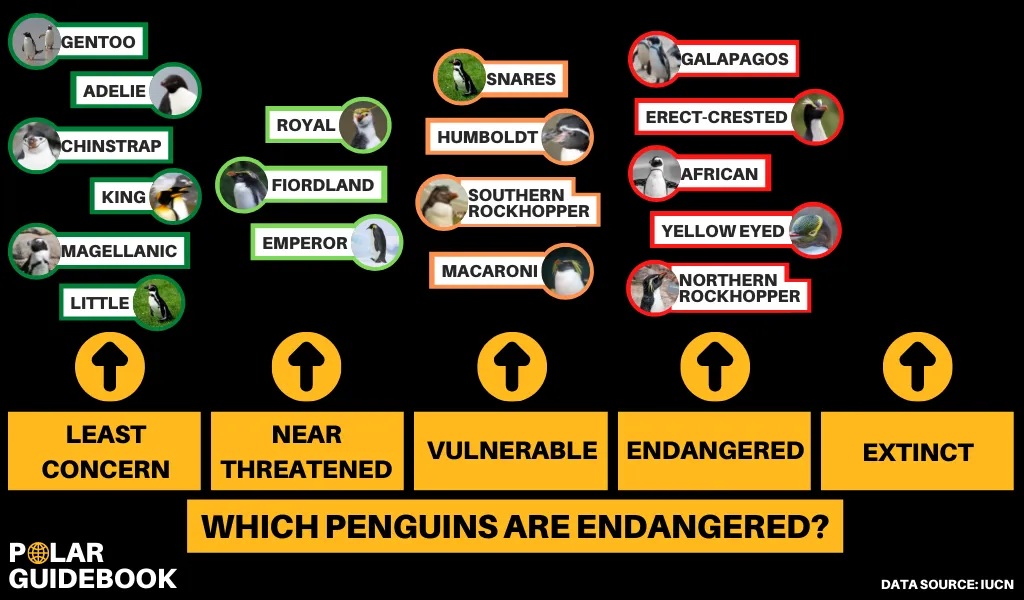
Many other species are also losing numbers too with 12 out of the 18 species of penguin experiencing population declines. Those penguins that live in Antarctica face specific threats around the melting sea ice which they use as a breeding platform.
That being said, two penguin species are seeing population growth, these are Adelie Penguins and King Penguins.
Why Are Penguins Endangered?
Penguins are endangered for a variety of reasons which include climate change, poaching, industrial fishing practices, oil spills, and disease. Each type of penguin faces unique threats depending upon the habitat in which it lives.
Here is a breakdown of each endangered species of penguin and the main factors that affect them:
Why Are Yellow-Eyed Penguins Endangered?
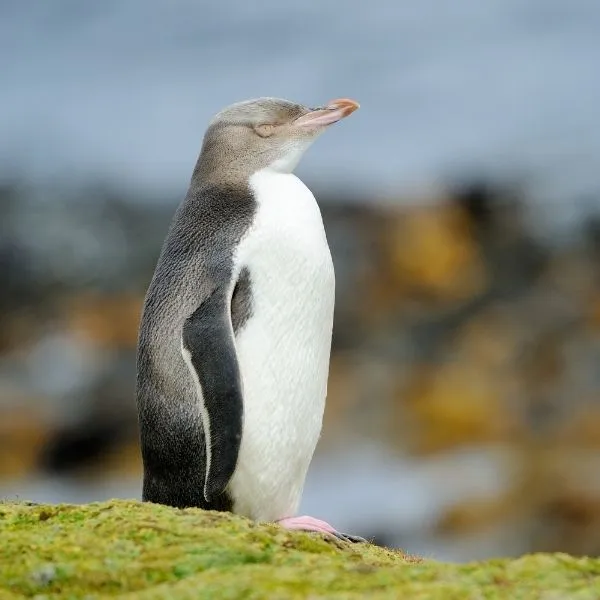
The biggest threat facing Yellow-Eyed Penguins in New Zealand is Industrial fishing which results in by-catch where penguins are accidentally caught and killed, this also influences prey availability.
Yellow-Eyed Penguins are also impacted by non-native predators particularly on land at nesting sites from species such as ferrets, unleashed dogs, and feral cats on the South Island. Other problems include fires in breeding areas, disease, and disturbance by tourists1 (source: IUCN).
Why Are Galapagos Penguins Endangered?
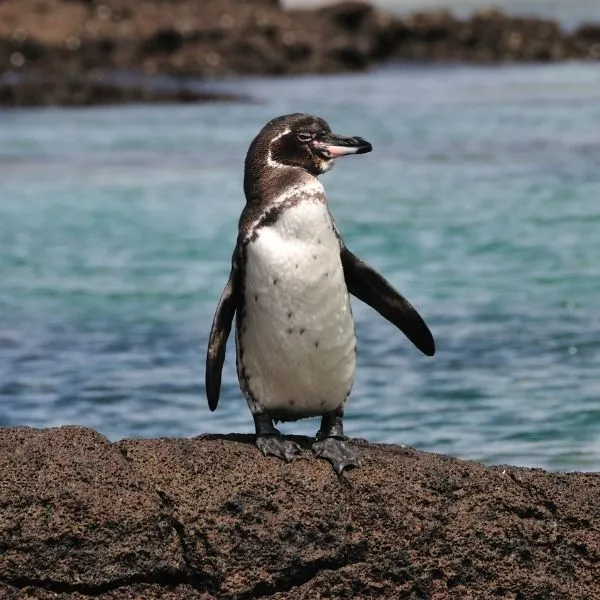
Galapagos Penguins are the worlds smallest population of penguin with only around 1,200 left. They are impacted by the unintentional effects of fishing such as getting caught in nets and by non-native animals bought to the island by humans such as rats, cats, dogs, and mosquitoes.
Galapagos penguins are also threatened by ENSO (El-Nino Southern Oscillation), this is a recurring climate pattern and natural event that causes changes in wind, temperature, and rainfall across the tropical pacific region where the Galapagos Islands are located. ENSO impacts on sea conditions and food availability for penguins2 (source: IUCN).
Research from the IUCN suggests that these climate events are expected to become more frequent and extreme with climate change affecting penguin survival.
Why Are Erect-Crested Penguins Endangered?
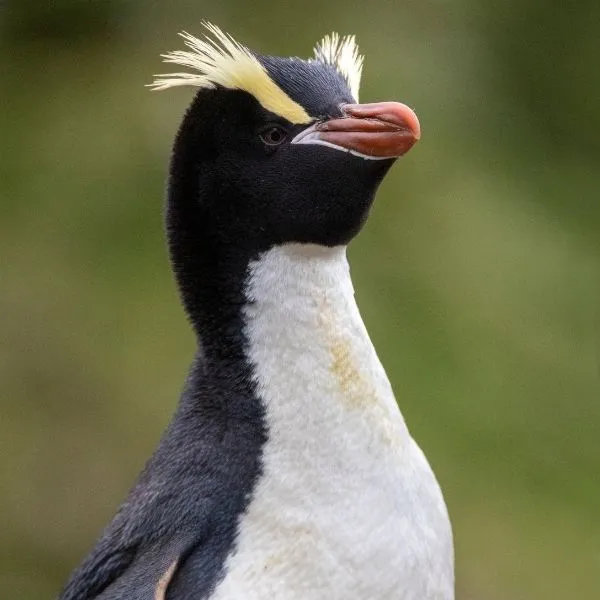
Erect-Crested Penguins may face many of the same threats faced by Yellow-Eyed Penguins which are also endemic to New Zealand.
However, there isn’t enough data on this species to say for certain what is causing their decline but research suggests that climate change is the major influence on habitat and food availability3 (source; L.S. Davis, Eerect-Crested Penguin (eudyptes sclateri), in: Biology and Conservation of the World’s Penguins, 2013).
Why Are African Penguins Endangered?
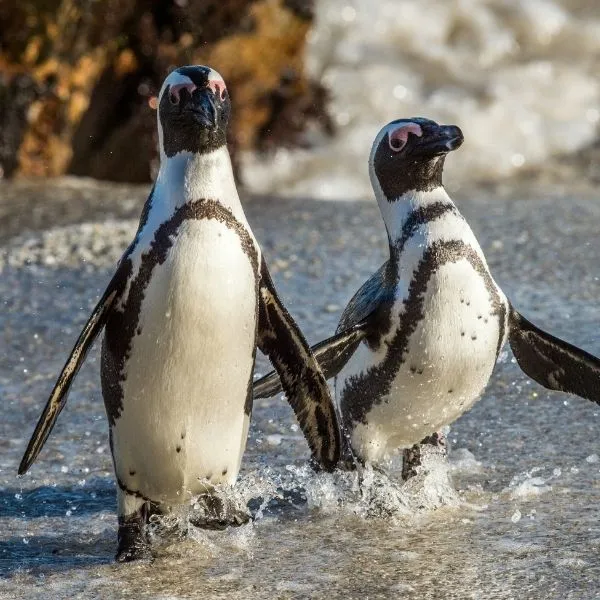
The African Penguin has experienced significant population declines and it’s suggested that without conservation areas they would already be extinct today4 (source: IUCN).
Egg poaching by humans has historically played a large role in the decreasing population of African Penguins, although this has now been made illegal. However, prey scarcity is a new threat facing African Penguins due to climate change and industrial fishing which have depleted forage fish in areas where African Penguins hunt.
They are also facing increasing competition from the Cape Fur Seal which has been a major cause of population decline in some areas such as Dyer Island5 (source: F. Weller, et al., Ecological Modelling, Vol 327, 2016).
Other threats such as disease, oil pollution and increasingly severe storms are also impacting the population.
Why Are Northern Rockhopper Penguins Endangered?
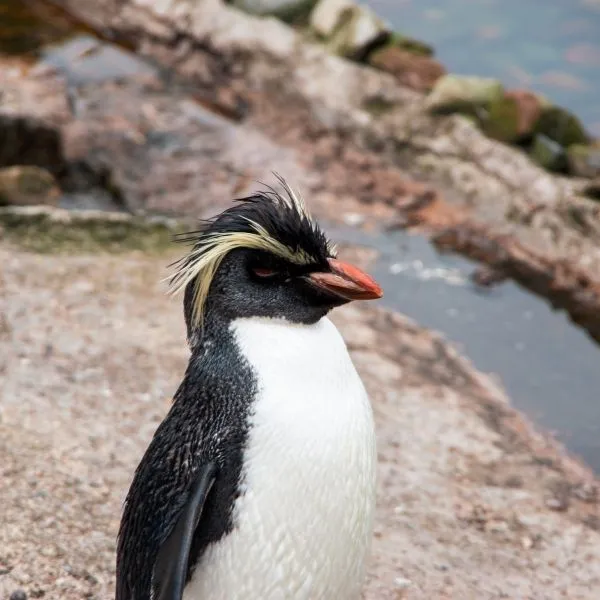
The major reason why Northern Rockhopper Penguins are endangered is related to increasing conflict with human activities. Reasons include industrial fishing, oil spills, and poaching.
Poaching of eggs has been a large cause of population decline among Northern Rockhopper Penguins which are found across the South Atlantic and Southern Indian Ocean. Although it is mostly illegal to eat penguins, their eggs and guano (poop) are still harvested today in some islands they inhabit.
They also face increased competition for prey and habitat from the Subantarctic Fur Seal and are highly susceptible to viral pathogens which research suggests are likely the reason for 4 years of breeding failure on Amsterdam Island6 (source: IUCN).
Are Penguins Going Extinct?
No, as a family, it’s unlikely that penguins will go extinct anytime soon because some of the larger species such as Adelie and King Penguins are growing in population size and abundance.
However, there are certain types of penguins that are at risk of extinction. For example, the IUCN predicts that the African Penguin would already be extinct if it wasn’t for conservation efforts and predicts the recovery potential to be between 25-58% which affects the likely long-term survival of the species.
Are Emperor Penguins Endangered?
No, Emperor Penguins are not endangered, however, they aren’t totally in the clear as they are classified as near threatened by the IUCN which means they may be vulnerable to endangerment in the near future.
There are currently 238,340 breeding pairs (or 476,680 individuals) and whilst this is on the decline this trend is recognized, monitored and conservation measures are being put in place7 (source: IUCN).
The biggest threat facing Emperor Penguins is melting sea ice in Antarctica due to climate change. Emperor Penguins use the sea ice for breeding, but as this melts, it will be difficult for them to find stable and long-lasting ice to rear their young.
Loss of habitat could result in colonies north of 70°S decreasing or even disappearing when global temperatures hit 2°C (2025-2052) which represents 50% of total Emperor colonies8 (source: D. Ainley, et al., Ecological Monographs, Vol 80, No 1, 2010).
Another study, predicts that 98% of Emperor Penguin colonies will become extinct by 2100. Despite many adaptations for surviving in the cold, they are not evolved enough to survive the rapid decline in sea ice predicted this century9 (source: The Conservation).
How Are Penguins Not Extinct Already?
With all these threats that penguins face, it’s astonishing that several of the species have managed to survive. But this is due to international conservation efforts and protected areas across the world.
For example, the Antarctic Treaty that governs the continent of Antarctica, which is home to several species of penguin, has given penguins a status as “specially protected species,” which means that human activity cannot remove, injure, kill, or interfere with them or their eggs10 (source: Penguins International).
Another major piece of legislation is the Convention on International Trade in Endangered Species of Wild Fauna and Flora (CITES) which protects endangered animals including the Humboldt Penguin and the African Penguin and regulates the capture and trade of wild caught birds.
CITES regulations have been agreed by 184 countries globally and regulates the wildlife trade to encourage a reduction in the capture and trade of wild caught wildlife and also encourages captive breeding to supply zoos and enable restoration of wild stocks11 (source: CITES).
How Can We Help the Penguin?
If you’ve read this article carefully, you’ll know that almost every major threat faced by endangered penguin populations is due to human behavior. Whilst politicians and charities have a large role to play, there are some steps that we can all take every day that will help the penguins:
1. Reduce your fish consumption
Industrial and recreational fishing impacts penguins directly through by-catch and indirectly by disrupting their food supply. Reducing or eliminating your consumption of fish is a good way to help penguins in the long term.
Eating sustainable fish is an alternative to reducing your consumption, however, there is growing concern around how sustainable fishing is overseen so it’s best to avoid fish altogether and you should always look to see where fish you buy are sourced.
2. Reduce your CO2 footprint
Many of the problems faced by penguin colonies can be directly or indirectly traced back to climate change. Whether it’s the melting of the sea ice which is a direct consequence or changes in prey abundance which is often the result of indirect environmental impacts.
Therefore, we can all help penguins by reducing our own contributions to climate change by limiting our carbon footprint and reducing carbon and greenhouse gas emissions. This might involve using more public transport, making our homes more efficient through energy and water saving including switching to a carbon-neutral or renewable electricity source.
3. Reduce your plastic waste
Although there are no strongly documented cases of plastic waste having a major impact on penguin populations, studies have found penguins can get caught in discarded plastics and high levels of microplastics have been found in water samples in areas used by penguins.
The impact of micro plastics on penguins has yet to be determined but for example, samples taken from Tristan da Cunha, a remote group of islands in the South Atlantic where Northern Rockhopper penguins are found, reported microplastics in 15 out of 19 samples12 (source: J.E. Caselle, et al., Ecosystem Assessment of the Tristan Da Cunha Islands. 2017).
We can all help penguins by reducing out plastic waste and eliminating our use of single-use plastics that could end up in the ocean.
4. Donate to a penguin conservation charity
If you want to make a more direct contribution to helping penguins, contributing to a charity is a great way to support ongoing efforts and penguin conservation efforts. Some charities you can donate to include:
Related Questions
Why Are Adelie Penguins Endangered?
Adelie Penguins are not endangered, their population is growing and they are classified as Least Concern. However, they are also impacted by melting sea ice in Antarctica which they use as a breeding ground.
Estimates suggest that colonies north of 70° S (currently accounting for 75% of Adelie Penguins) could disappear when global temperatures reach 2°C which is likely before 205213 (source: D. Ainley, et al., Ecological Monographs, 2010). However, the study also notes that they may colonize new breeding habitats south of 73° S which would negate the impact.
Why Are Macaroni Penguins Endangered?
Macaroni Penguins are not endangered, however, their population is decreasing and they are classified as vulnerable which is the next tier above endangered and means that the species may be threatened with extinction if the threats it faces do not improve.
As with all penguin species, climate change is a threat to Macaroni Penguins, both directly through habitat loss and indirectly through ecosystem effects. The rising population of fur seals also means increased predation for penguins as well as more competition for prey.
Why Are Little Penguins Endangered?
Little Penguins are not endangered, their population is relatively stable and they are considered to be in the Least Concern category according to the IUCN. This might be surprising as they have the shortest lifespan out of all penguins.
However, they still face similar threats to other penguins such as human disturbance, oil spills, and rising sea temperatures which affect prey abundance and breeding success14 (source: IUCN).
Why Are King Penguins Endangered?
King Penguins are not endangered, they are one of the few penguin species that have a growing population and they are considered Least Concern.
However, scientists still highlight the challenges King Penguins will face due to warming sea temperatures which means they will have to travel further to reach the colder Antarctic waters where they catch their prey15 (source: C. Péron, et al., Proceedings of the Royal Society of London B: Biological Sciences, Vol 279, 2012).
Adding to this problem, warming oceans are also causing their prey to reside at deeper depths meaning King Penguins have to dive further to reach them. Several other human activities are also a threat to King Penguins including habitat disturbance from helicopters, fishing, and oil spills.

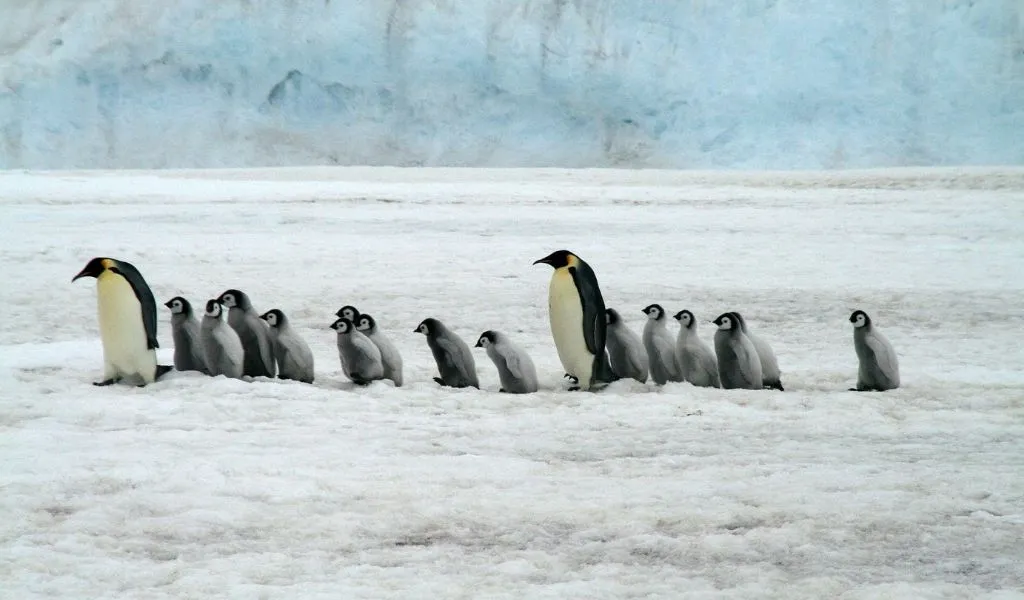
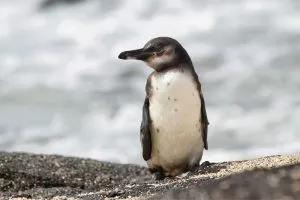
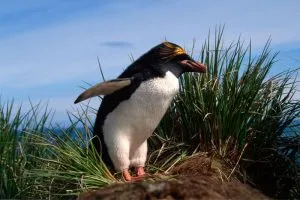
![Read more about the article 15 Amazing Facts About African Penguins [#9 Might Make You Squirm]](https://polarguidebook.com/wp-content/uploads/2023/01/African-Penguin-1-300x200.jpg)